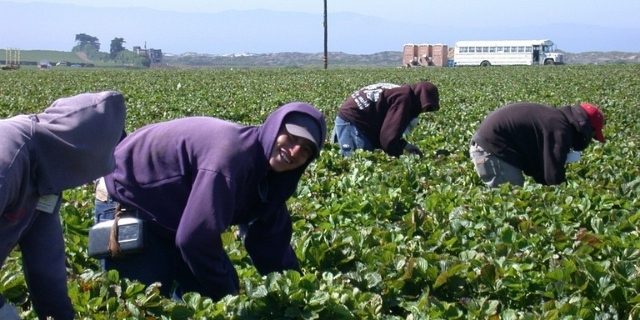03
Nov
EPA Finalizes Industry Friendly Rules Weakening Pesticide Buffer Zones

Application Exclusion Zones (AEZs) are buffer zones where individuals are not permitted to enter during a pesticide application, as doing so would put one at risk of dangerous exposure. EPA proposed, and has now finalized, a number of changes to the way AEZs work. The agency is: i) removing responsibility for chemical-intensive farms to keep bystanders out of off-site spray areas; ii) allowing pesticide applications to stop and start when individuals enter and exit AEZs (rather than establish set safety requirements); iii) exempting on-farm families from AEZ protections, allowing dangerous pesticide applications to take place near buildings and other shelters where family members reside within an AEZ (“rather than compelling them to leave even when they feel safe remaining inside,” the agency notes in a disturbingly unscientific fashion), and; iv) “simplifies” or weakens criteria around determining the appropriate buffer size for an AEZ.
Industry began pushing rollbacks to farmworker protections early in the current administration, starting with the 2017 announcement under former Administrator Pruitt that EPA would revise Worker Protection Standards initially agreed upon under the Obama Administration. Not all of these efforts were successful, however, as 28 Senators pushed back in a 2018 letter opposing the agency’s revisions. “These rules were revised to prevent farmworker poisonings and in the aftermath of pesticide misuse that led to serious harm for hundreds of homeowners and their families, and resulted in the tragic deaths of children,” the Senators wrote.
While certain provisions were maintained under a 2019 deal cut between the Senate and EPA, AEZs fell by the wayside. “EPA does not account for workers or bystanders being sprayed with pesticides when it conducts risk assessments or registration divisions because it ‘assumes’ these exposures do not happen,” the 28 Senators wrote. “Yet it is taking steps to undo one of the most meaningful safeguards against such exposures.”
There is no indication from EPA as to whether the agency will now consider worker or bystander exposures in pesticide registrations, given the rollback to AEZ requirements. While the agency claims its changes will “reduce regulatory burdens for farmers” it is evident that the rule is not about protecting farmers, but instead providing greater leeway to use products produced by the agrichemical industry.
Farmworkers deserve greater protections, determined by science, not political compromise. The average life expectancy for a farmworker is just 49 years, while the average American can be expected to live until 78. Is it morally repugnant that America continues to perpetuate a system that relegates a resident population to the living conditions of the 1850s.
Take a stand this election day. Vote for the candidate that will protect worker health, public health, wildlife, and the wider environment from hazardous chemicals. And don’t forget to research and weigh in down-ballot races – it takes a movement of allies to make the changes we so desperately need for the future of our health and the planet. The next EPA could reinstate worker protections, and your Congressmember could be the one that makes it happen– let them know that is a priority for you by sending a message today.
All unattributed positions and opinions in this piece are those of Beyond Pesticides.
Source: EPA










